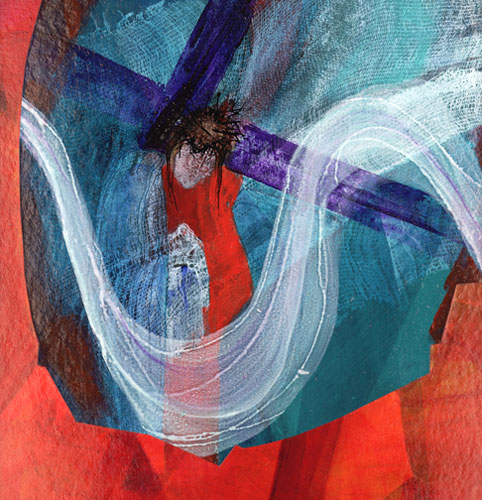WelCom March 2020:
Elizabeth Julian rsm

Image: Virginia Scribner Mallard, Connecticut, USA
On 8 March we celebrate International Women’s Day; and on 25 March the Feast of the Annunciation. Both fall during Lent, traditionally a time for making the Stations of the Cross. Can we connect the three?
International Women’s Day, begun by the United Nations in 1975, recalls women’s social, economic, cultural and political achievements and contributions to society. The UN 2020 theme is about building a gender-equal world in: boardrooms, government, media coverage, workplaces, sports coverage and more.
Perhaps we could: make a point of thanking women for their contribution whether it be parish, local neighbourhood, school; and be proactive in raising questions about women’s lack of equality.
But when it comes to women’s achievements Mary’s takes some beating. She gave birth to the Son of God! The New Zealand Bishops claim in their pastoral letter And the Mother of Jesus was there:
“God dignified her by consulting her – not over some trivial everyday matter of no consequence – but an event of world-shattering significance. And Mary responded frankly and openly, asking questions and not hesitating to express her emotions and feelings” (Luke 1: 26-38).
Mary’s ‘yes’ came at great personal risk. An unwed pregnant teenager, she didn’t consult the men in her life – her father, or Joseph, or the temple authorities – but took things into her own hands.
It may have been hope that made some women become disciples of Jesus. They ministered to him in Galilee and journeyed with him to Jerusalem. Three of the traditional Stations of the Cross, mention women: Mary, Veronica who wipes Jesus’ face – a very compassionate action in the midst of such brutality – and the women of Jerusalem. (Station #13 is usually depicted as Jesus being laid in Mary’s arms.)
Matthew tells that at the crucifixion there are many women looking on from a distance (27:55-56). They provide continuity between the passion and resurrection. Mary Magdalene, Mary the mother of James and Joseph, and the mother of the sons of Zebedee are among them. They witness all the events of Jesus’ death, burial and sealing in the tomb with a large stone. They keep vigil, sitting opposite his tomb (27:61). Later the first two mentioned come to ‘see’ the tomb (28:1) not to anoint him as another woman has already done this (26:6-13) – Jesus says her action will be remembered wherever the gospel is preached. They witness the second earthquake, the appearance of the angel, and the fact that the grave is empty (28:1-6). Finally, having been reassured and commissioned by the angel to tell the disciples that Jesus has been raised, they meet Jesus himself, embracing the feet they had earlier seen nailed to the cross. Jesus repeats the angel’s commission. So, in the absence of the male disciples who have fled (26:56), the women are the witnesses to the fact that Jesus died (27:55-56), that he was buried (27:61) and that he was raised (28:1-10).
So women were with Jesus from womb to tomb and beyond. Perhaps we could spend some time with them this Lent.